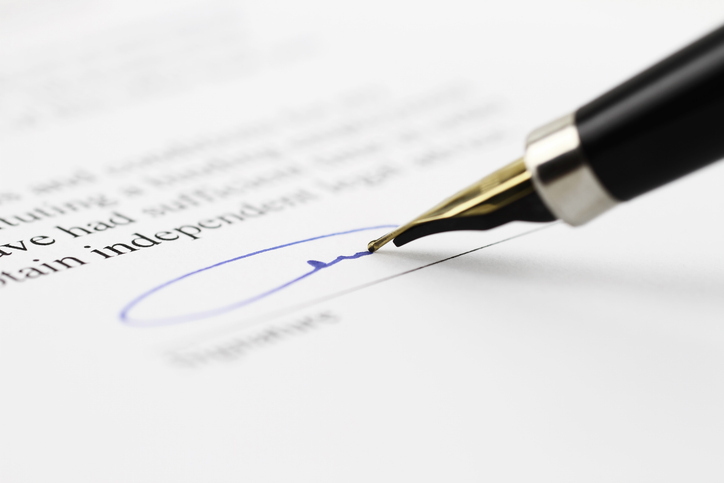Whether you are craft beer brewery or a bespoke software solutions provider, your brand is one of your most valuable assets. To your clients and potential clients, it represents your reputation and all the goodwill you have built up over the years. In the branding world, we often talk about different ‘brand assets’, meaning the individual bits that make up your brand – including your name, your logo, the look and feel of all your branded materials including your colour pallet, fonts and more.
Knowing how to prevent your overall brand from being diluted, damaged or taken advantage of through misuse by competitors, counterfeiters or unrelated companies will help maintain its value as an asset. Legal rights like trademarks, copyright and registered designs – all of which fall under the umbrella term ‘IP rights’ – exist to help businesses and individuals defend themselves like this. Each different right affords a different level and kind of protection to a different aspect of your brand.
Because they are easier to enforce and publicly searchable, registered rights (that is rights for which you proactively have to register) like trademarks and registered designs, often discourage competitors from going near your branding. If someone does go near your branding or blatantly copies elements of it, valid registered rights stand up in court. In order to ensure your registration is valid, the registered owner and address should be correct, and if the registration is more than five years old, the trade mark will need to have been put to use in the relevant territory.
Trademarking brand assets
Trademarks are often the preferred right to protect branding because they provide a monopoly right with that is easy to prove and that allows the owner to prevent a third party from using any name or brand that might be deemed to be ‘confusingly similar’. You can trademark a whole range of brand assets: logos, names, taglines, images and even some more abstract aspects of your brand, including colours, smells and sounds. If you can think of a famous brand, chances are it’s been trademarked.
Most small businesses I work with choose to trademark their primary name and the name of individual products in the first instance. There have been plenty of examples of organisations (large and small) using their registered trademarks to stop others using their brand without permission. Take the band Little Mix, for example. X-Factor fans will remember they started life out as Rhythmix, but soon changed their name to Little Mix when the music charity Rhythmix (only a small organisation of around ten employees) asked them to change. Rhythmix had a registered trade mark, so could have used this as grounds to force a change from Little Mix if necessary.
Earlier this year, we also saw a small dispute between wedding site hitched.co.uk and Cumbria Wedding, an online wedding directory for the Lake District area. A couple from Penrith originally created Cumbria Wedding as ‘Hitched in Cumbria’. However, hitched.co.uk owned the trademark on the name HITCHED for certain types of goods and services, including the ‘compilation provision of directories for publishing on the internet’, and so asked “Hitched in Cumbria” to change name, which they did.
While trademarks are the most popular way to protect parts of your brand, there are other legal rights out there you can rely on, some of which are more suitable in different situations. Design rights give you the exclusive rights to use a design for up to 25 years. Similarly to with trademarks, you can stop others making, offering, putting on the market, importing, exporting, using or stocking for those purposes, a product to which your design is applied. The main difference from a trademark is that a design right protects the appearance of the design, whereas, to use legal language, a trademark protects a sign insofar as it is a marker of origin of goods or services.
When protecting a brand the protection of logos and designs should also be considered at the same time as a trademark, but it is not uncommon to spread the cost of registration by following up at a later date. However, to register a design it needs to be ‘new’, and so using it in your brand but deferring registration might put your ability to register it at risk. Some jurisdictions, including the European Union, allow for a grace period that means registration is still possible once the owner has put the design into the public domain. Registration for designs can be quicker than for trademarks (taking a matter of days, instead of months). If necessary, legal actions over design rights can also be brought quickly and effectively.
Copyright ownership
Copyright is another IP right, often spoken about, that companies rely on to protect their original works. This right doesn’t require registration in the UK, but exists automatically and can be enforced as long as you have proof of having first produced the copyrighted material covers music, writing, artistic works like photographs and more. When it comes to branding, often questions of copyright ownership are raised as part of a wider IP dispute. It’s important to know what copyright you own and what copyright you don’t. If you are the first creator and have not assigned it to anyone else, then the copyright is yours. If you are not, it isn’t.
There is currently a case going through the European courts that shows the potential for using your copyright to stop others from diluting your brand. We are all familiar with the logo of the UK National Lottery – the smiling hand with its fingers crossed.
The National Lottery Commission previously registered this logo as a trademark. However, Naples-based company Mediatek Italia and Naples-resident Giuseppe de Gregorio, claimed that the trademark shouldn’t have been registered because decades since before the trademark was registered, they owned the copyright on the image. Because copyright is not registered, they had to provide their own evidence of copyright ownership, which, in this case, involved a copyright assignment agreement from third party purporting to be the author of the image which assigned to Giuseppe de Gregorio. The trade mark was cancelled, but is currently the subject of several appeals.
So, as we can see there are several different kinds of rights that businesses should consider when it comes to protecting their brands. Businesses that understand the value of their brand are keen to protect their brands. When infringement of brand rights happens, it does not mean you will necessarily end up in court. Sometimes infringers simply don’t check to see whether they are clear to use a brand asset before doing so. Often they will respond to a request to cease and desist from usage. The legal right is simply an insurance for if a legal dispute arises.
Trademarks remain the preferred method for protecting a brand. However, businesses should be aware of the other rights out there, not just in order to protect their own brands, but also to be sure they are not infringing others’ IP rights as well.
Matt Sammon is head of the UK trademark practice at Marks & Clerk.





